|
第十七屆中國光伏學術大會(CPVC17)將于2017年8月29日-9月1日在內蒙古自治區呼和浩特市召開!作為CPVC17重要邊會暨第三屆碲化鎘材料與太陽能電池技術國際研討會由中國可再生能源學會光伏專業委員會、《太陽能發電》雜志聯合舉辦,中國科學院電工研究所與美國科羅拉多州立大學聯合組織。本屆研討會特邀國內外頂級專家蒞臨會場,與國內專
第十七屆中國光伏學術大會(CPVC17)將于2017年8月29日-9月1日在內蒙古自治區呼和浩特市召開!作為CPVC17重要邊會暨第三屆碲化鎘材料與太陽能電池技術國際研討會由中國可再生能源學會光伏專業委員會、《太陽能發電》雜志聯合舉辦,中國科學院電工研究所與美國科羅拉多州立大學聯合組織。本屆研討會特邀國內外頂級專家蒞臨會場,與國內專家、學者、企業代表共聚一堂,交流、總結碲化鎘材料與太陽能電池技術研究的最新成果,討論今后的研究重點與技術發展方向,開拓國際合作空間,推動碲化鎘薄膜太陽電池技術的深入發展。 近幾年,碲化鎘薄膜太陽電池技術在國際上的發展卻非常迅速,無論是在產業上還是基礎研究上都取得令人矚目的進步。產業化方面,2015年6月大面積電池組件(7038.8cm2)效率達到18.6%,超過多晶硅組件17.7%的全面積效率。這意味著,碲化鎘薄膜太陽電池已經打破了人們對薄膜太陽電池低成本、低效率的傳統認識,而成為一種低成本、高效率的太陽電池。美國First Solar在2015年的產量超過2GW,0.72㎡組件產線平均效率達到了16-17%,組件售價也降到$0.40/Wp左右。更在近期公布開發第六代(G6)面積為2.16 m2 、400W大組件的計劃。基礎研究方面,2011年以來,CdTe太陽電池的效率世界紀錄連續九次被突破,美國First Solar公司于2016年公布了實驗室電池轉換效率22.1%的新世界紀錄,已經超過多晶硅電池的實驗室效率。但開路電壓一直是碲化鎘薄膜太陽電池的短板,過去性能較好電池的開路電壓基本上分布在800 ~ 850 mV區間。NREL和Washington State Univ.等多家單位聯合攻關,于2015-2016年取得重要的突破性進展,基于體單晶CdTe的器件開路電壓歷史性地突破1.0 V。幾乎在同期Arizona State Univ.的團隊采用分子束外延制備的CdTe單晶薄膜與硅薄膜結合制備結電池,開路電壓也達到1.12 V。2017年Colorado State University采用MZO窗口層替代CdS、CdSeTe增大吸收層的吸收波段、Te背接觸等技術實現了19.1%的轉換效率和超過28mA/cm2的短路電流密度。這些進展無疑對碲化鎘太陽電池的發展起到重大的指導意義。碲化鎘電池技術無疑是非常值得期待的。 豪華專家演講團部分專家簡介 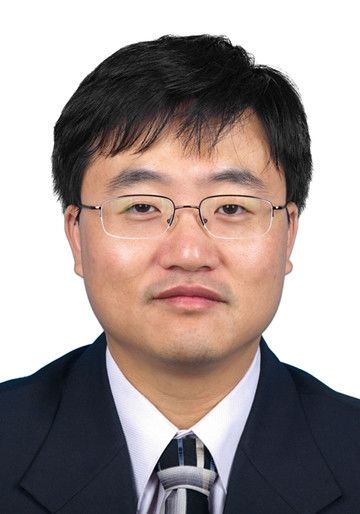 劉向鑫 中國科學院電工研究所特聘研究員、博導、百人計劃學者 簡介 連續十六年從事碲化鎘太陽能電池的研究。國際首例CdS-CdTe納米偶極子太陽能電池發明人,最高效率13.2%,領先國際水平。磁控濺射方法制備CdTe薄膜太陽能電池的最高認證率14.4%,國內先進,國際相同技術保持領先。近五年獲得多項項目資助,主持國家自然科學基金項目、中國科學院百人計劃擇優支持項目,并參與國家863計劃、中國科學院創新交叉團隊等多個項目。 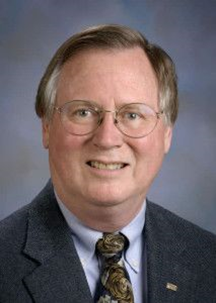 James Sites, 美國科羅拉多州立大學物理學學院 教授 簡介 James Sites studies the device physics of CdTe and CIGS thin-film solar cells. He received his PhD from Cornell in 1969 and has been on the Colorado State faculty since 1971. His photovoltaics lab makes precision electrical and optical measurements on solar cells fabricated at Colorado State and by several partners in the U.S. and abroad. The goals of his laboratory are to separate the various solar-cell losses, to explain the losses on a fundamental basis, to make numerical simulations when appropriate, and to suggest strategies for improved solar-cell performance. Prof. Sites has a recognized leadership role in the U.S. thin-film solar-cell community. He has published 180 papers, including co-author on CdTe solar cells in the Handbook of Photovoltaic Science and Engineering. 47 of his students have completed their M.S. degree and 30 their Ph.D. 演講題目 Strategies to increase CdTe efficiency 內容摘要 The talk will describe advances at Colorado State and elsewhere on key issues for the CdTe absorber material, the front layers before the absorber, and the back contact. Most important is how the individual layers and their interfaces come together to determine the cell efficiency. 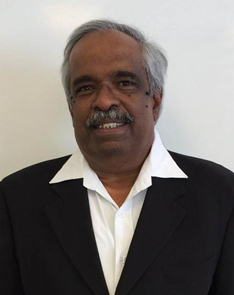 W.S.Sampath,美國科羅拉多州立大學機械工程學院 教授 簡介 Dr.W.S.Sampath is a professor of Mechanical Engineering at Colorado State University. He is the founding Director of the National Science Foundation (NSF) Industry/University Co-Operative Research Center for Next generation Photovoltaics (PV). The members include industry leaders such as First Solar, the largest manufacturer of CdTe PV and 5N Plus the largest supplier of CdTe materials for the industry. His research has been focused on CdTe photovoltaics since 1991. His research has been applied to PV manufacturing in industry including at Abound Solar for manufacturing at the rate of 180 MWs/Yr. His research is also supported by the Dept. of Energy (DOE). 演講題目 CdTe Photovoltaics for Sustainable ElectricityGeneration 內容摘要 Energy sustainability represents one of the grand challenges facing modern society, and CdTe thin film solar photovoltaics provide the best opportunity for rapidly expanding renewable energy. CdTe PV is currently competitive for generating electricity in many parts of the world providing electricity at 7-9 US cents/kWh from utility scale projects without subsidy and the costs are decreasing rapidly. Recently an agreement was made to sell electricity from CdTe PV from a new 100 MW field at 3.87 US cents/kWh. There are no technical barriers to substantial increase in CdTe PV production. In our center, CdTe research has been ongoing since 1991. Device efficiency of 18.3% (independently certified) on low cost soda-lime glass substrates using a low cost sublimation process with two minute cycle time in modest vacuum has been demonstrated. Efficiencies of 19.1% without anti-reflection coating have been measured on these substrates. The current research focus is to significantly increase device efficiency and increase module life from 25 years to 50 years to facilitate the US Dept. of Energy (DOE) goal of 2-3 US cents/kWh while maintaining a direct line of sight to GW scale manufacturing. 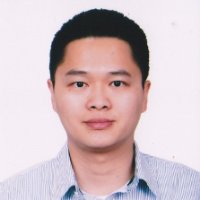 Kuo-Jui Hsiao, Reel Solar太陽能技術公司 首席科學家 簡介 Dr. Hsiao joined RSI in July 2014. He is an experienced PV specialist; previously VP of R&D in Terasolar Power Inc., assistant professor in National Taiwan Normal University, principal engineer in both TSMC and TSMC Solar. Dr. Hsiao is experienced in thin-film solar panel manufacturing (CIGS and CdTe), research and development, characterization, process engineering, and reliability test. He has delivered traceable champion module and successfully transferred technology for TSMC Solar. Dr. Hsiao holds a B.S. in Physics from National Taiwan University and a Ph.D. in Physics from Colorado State University, where he researched solar-cell characterization, CdTe thin-film solar cell, and device modeling. 演講題目 High Efficiency Electroplated CdTe Solar Module 內容摘要 Reel Solar power Inc. (RSPi) is producing CdTe solar modules with innovative patented electroplating technology. After post-deposition treatment, CdTe electroplated in RSPi behaves like CdTe prepared at high temperature and vacuum. In the past three years, RSPi improved conversion efficiency by 1% per year and now plated CdTe solar modules with high efficiency and reasonable reliability have been delivered. 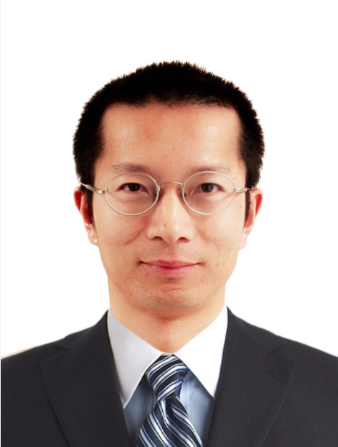 熊剛,First Solar加利福利亞研究中心 主任 簡介 熊剛博士現任First Solar加利福利亞研究中心主任,主持CdTe太陽能電池高端研究工作。熊剛博士2007年加入First Solar,十年內完成多項電池器件/組件技術研發及量產的項目。熊剛博士領導的團隊數次打破CdTe電池轉換效率的世界紀錄。譬如在2011年,他的研究團隊實現17.3%的器件轉換效率,一舉打破由NREL保持10年之久的世界紀錄。熊剛博士本科和碩士畢業于中國科技大學物理系,后在美國Wake Forest大學獲得物理學博士學位。在加入First Solar之前,他在美國能源部所屬的西北太平洋國家實驗室從事博士后研究工作。 演講題目 Toward 25% CdTe Solar Cell Efficiency 內容摘要 In 2015, First Solar set a new CdTe solar cell efficiency record at 21.1%. Thanks to ZnTe back contact that has higher work function and better chemical affinity with Cu, FF and light soak stability of CdTe devices were significantly improved. The 31.7mA/cm2 record Jsc was accomplished by elimination of window layer and alloying with Se. Increased Voc has been mostly driven by a nearly two-decade improvement of minority carrier lifetime (from ~1 ns to 100 ns). Our collaboration on DOE fPACE2 program partners also demonstrated that CdTe as a material is as good as GaAs and 25% device efficiency should be possible. Achieving 25% efficiency requires some breakthrough on absorber doping and/or reduction of back surface recombination. Recently, we have been able to consistently produce As-doped CdTe with greater than 1016 cm-3 hole concentration in poly-crystalline devices. We have demonstrated 906 mV Voc, and 18.2% efficiency separately, both on Cu-free devices, As-doped devices showed excellent stability. Nevertheless SRH recombination in such devices were apparently higher than that of Cu-doped devices, which limits further Voc improvement. As far as back surface passivation, a few materials such as Cd1-xMgxTe showed promise on reduction of CdTe surface recombination velocity. Enhanced Voc was demonstrated on thin absorber devices with back surface passivation layer. However, many back surface passivation materials we investigated exhibited an unfavorable valence band offset hence to block hole transport. Furthermore, some materials may not be manufacturing friendly, for example that Cd1-xMgxTe is easy to oxidize in our study. In summary, we have made great accomplishment in the last couple of years on CdTe solar cell efficiency improvement, and have hence developed stronger confidence on CdTe efficiency entitlement. In order to reaching 25% efficiency target, we must overcome significant process and device integration challenges specific to polycrystalline CdTe material engineering. 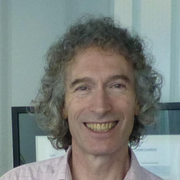 Stuart J.C.Irvine,斯望西大學太陽能研究中心 主任 簡介 Professor Stuart Irvine is Director of the Centre for Solar Energy Research (CSER) in the College of Engineering, Swansea University and is based in the OpTIC Technology Centre in St Asaph, North Wales; along with the CSER team. He is one of the pioneers for deposition of II-VI compound semiconductors by Metal-organic Chemical Vapour Deposition (MOCVD) for application to thin film solar cells and advanced thin film materials to and for the opto-electronics industry. This research has led to the publication of over 200 journal and conference publications and 10 patents. Professor Irvine received his B.Sc degree in Physics from Loughborough University, Ph.D in Physical Metallurgy and Science of Materials, and D.Sc in Physics, both from the University of Birmingham. Stuart chairs the Institute of Materials Mineral and Mining (IOM3) Energy Materials Group that has a broad view over the application of materials in energy generation and the challenges faced with both renewable energy generation and large power generation. 演講題目 Acceptor doping of CdTe solar cells:benefits and limitations 內容摘要 Acceptor doping of CdTe solar cells has traditionally been realized by diffusion of Cu from the back contact. Controlling the exact dose of Cu on the back contact is critical to avoid defect formation at the junction. The best doping concentrations for Cu are around 1E15 but to achieve a high Voc it is necessary to go to higher concentrations in the 1E16 – 1E17 range. Using metal-organic chemical vapor deposition (MOCVD) we have introduced As as an acceptor dopant in the 1E16 – 1E17 range. This talk will describe recent results on the As doping process, high As doping back contacts and SCAPS modeling of the doped devices. The benefits and some disadvantages of high acceptor concentrations will be discussed along with prospects for Voc to exceed 1 Volt in polycrystalline PV cells. 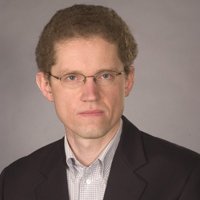 Darius Kuciauskas,美國國家能源部可再生能源實驗室 高級研究員 簡介 Dr. Kuciauskas is a senior scientist at the National Renewable Energy Laboratory (Golden, Colorado, USA) where he works on electro-optical characterization of photovoltaic materials and devices. He actively collaborates within NREL, with Universities and the PV industry, and has authored more than 100 publications in applied physics, materials science, and photovoltaics. 演講題目 Correlative Optical Microscopy and Spectroscopy of Charge Carrier Lifetimes, Mobilities, and Space Charge Fields in CdTe Solar Cells 內容摘要 Recombination limits solar cell efficiency, and understanding /reducing recombination is the focus of many research efforts. Our approach to identifying defect locations is based on carrier generation with a focused laser beam in well-defined regions in the solar cell. Two-photon excitation (2PE) enables analysis beyond the surface region, and time-resolved photoluminescence (TRPL) acquisition enables studies of interfaces, space charge region, and the absorber bulk. Optical microscopy with excitation beam focused to a radius less than the carrier diffusion length allows analysis of carrier transport characteristics. In addition, correlative measurements of Second Harmonics Generation (SHG) are a novel optical probe for space charge fields in CdTe solar cells. We will present results for single crystal, epitaxial, and polycrystalline CdTe materials and devices. We will also compare electro-optical properties of various types of chalcogenide solar cells. 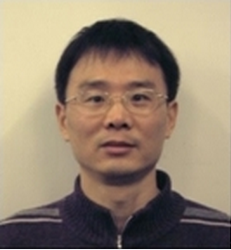 王德亮,中國科技大學 教授 簡介 2005-now, Professor of the National Laboratory for Physical Sciences at Microscale, University of Science and Technology of China Hefei. Group leader of the semiconductor thin film laboratory. Working on thin film CdS/CdTe growth and solar cell fabrication. 2003-2005, Post-doctoral research associate in the Department of Electrical and Electronic Engineering, Hong Kong University of Science and Technology. Working on GaN-related film growth by MOCVD and device fabrications. 1999-2002, Research scientist in the Joint Research Center for Atom Technology in Tsukuba, Japan. Grew GaN on Si substrates using SiC as a buffer layer using an MBE system. 1994-1997, Got the Ph.D from the Goettingen University, Germany. 演講題目 Highly efficient new structure CdTe thin film solar cell 內容摘要 In this report will present our recent progress on the fabrication of new structure CdTe thin film solar cells. The cell device performance, including the device stability, new buffer layer at the back contact and device performance under harsh environments will be reported. 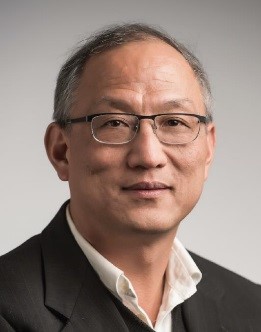 魏蘇淮,北京計算科學研究中心材料與能源研究部主任、教授 簡介 北京計算科學研究中心材料與能源研究部主任、教授。1981年6月畢業于復旦大學物理系,獲學士學位。同年通過中美物理聯合招生(CUSPEA)去美國讀博。 1985年8月畢業于美國威廉瑪麗學院(College of William and Mary),獲理學博士學位。之后在美國可再生能源國家實驗室(NREL)任博士后、科學家、資深科學家、首席科學家、理論研究室主任,國家實驗室Fellow。長期負責美國國家光伏中心材料理論方面的工作。一直從事理論凝聚態物理和材料計算領域的科學研究。多年來,在固體理論和材料計算方面做出了杰出的貢獻,尤其在研究半導體化合物、透明氧化物、合金、超晶格、納米材料,和能源材料等體系的結構、能帶、電學,光學,磁學,以及摻雜等性質方面取得了大量原創性且具有國際影響力的成果,并在研究這些體系的過程中發展了多種計算方法。在國際知名期刊上已發表了SCI論文450余篇,其中包括68篇發表在物理學頂級期刊《物理評論快報》(Physical Review Letters)上,60余篇在《應用物理快報》(Applied Physics Letters)上.論文引用40000多次,H因子=99。目前是多家國際科學雜志的編委。在國際大會上做了130余次邀請報告。2007-2010年被復旦大學聘為長江學者講座教授。1999年被選為美國物理學會會士(APS Fellow),2014年被選為美國材料學會會士(MRS Fellow)。2015年入選國家“^****”。2016年擔任國家科技部重大專項首席專家,并被選為中國材料學會計算材料分會副主任委員。 演講題目 First-principles Study of Defect Control in Thin-film Photovoltaic Materials 內容摘要 First-principles study of photovoltaic (PV) materials plays an important role in developing PV technologies because it can provide useful physical insights, fresh perspective and new design principles for developing innovative PV materials with high solar cell efficiency and reduced cost. A good solar cell absorber material should have appropriate band gap (1.0 ~ 1.5 eV) with high solar light absorption and correct band location/alignment relative to the extraction layers to form a good interface with contacting layer. More importantly, a good solar cell material also should have good defect properties so that it can be doped well such that charge carriers can be created easily to generate the required electric field and has less defect-induced recombination centers such that it has high carrier life time and minority carrier mobility so photo-generated charge can be easily collected. Currently, most issues related to PV absorbers can be traced back to certain defect related issues. In this talk, using thin-film solar cell absorber materials CdTe, CIGS, and CZTS as examples, I will discuss how theoretical first-principles studies can be used to better understand the defect properties and improve the solar cell performance. 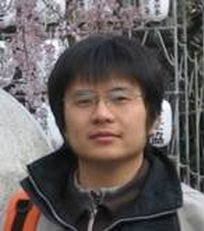 梁軍,北京大學深圳研究生院新材料學院 副教授 簡介 2012-by far, Association professor,school of advanced materials, Shenzhen Graduate School, Peking University, 2009-2011, Associate researcher,Shanghai Institute of Ceramics,Chinese Academy of Sciences. 2006-2009, Postdoctor, Tohoku University, Japan. 2003-2006, Ph. Doctor of science student, Microelectronics and Solid Electronics, State Key Laboratory of Functional Materials for Informatics, Shanghai Institute of Microsystem and Information Technology, Chinese Academy of Sciences 演講題目 The material and structure for the back contact of Silicon and CdTe solar cell 內容摘要 Here we told about the back contact of CdTe solar cell and Si-based solar cell. We built up the structure of Al2O3 films/electrode in back contact of solar cell, made some experiments and discussion, set up physical model. 部分其他參加報告單位 成都中建材光電 四川大學 會議安排 會議時間:2017年8月29日全天 會議地址:內蒙古大學 會議注冊方案 1. 注冊CPVC17大會(注冊網址:http://www.cpvc.org.cn/dct/page/65587)全程即可以免費參加所有邊會。 2.單獨注冊邊會:(1)注冊費為500元/人(溫馨提示:此項注冊費用僅限于參加本邊會交流活動)。(2)繳費方式:a.現場微信或支付寶支付 b.銀行轉賬繳納注冊費用,并在備注中標明參會人姓名、單位名稱和稅號。(3)開具發票名稱與類別:會議服務費(增值稅普通發票),會后統一開具。(4)邊會收款銀行賬戶: 帳戶名稱:北京均世陽光文化傳媒發展有限公司 賬 號:中信銀行安貞支行 開 戶 行: 7113 0101 9570 0002 585 聯系方式 中國科學院電工研究所 聯系人:吳秋晨、劉宇航 電話:15201315919、18504815659 郵箱:wuqiuchen@mail.iee.ac.cn 北京均世陽光文化傳媒發展有限公司 聯系人:吳軍杰 電話:13910020837 郵箱:wujunjie@solarpwv.cn
|